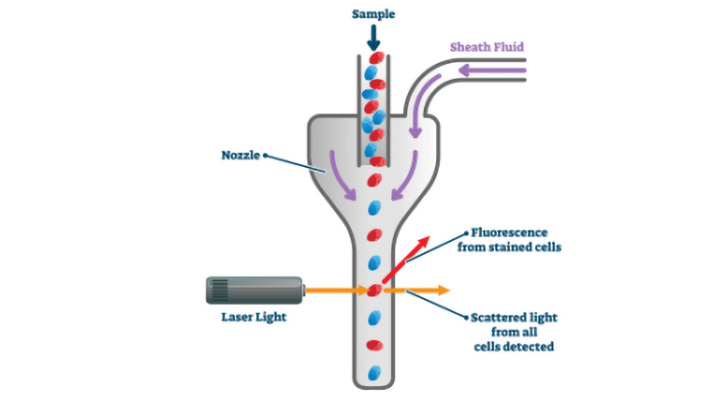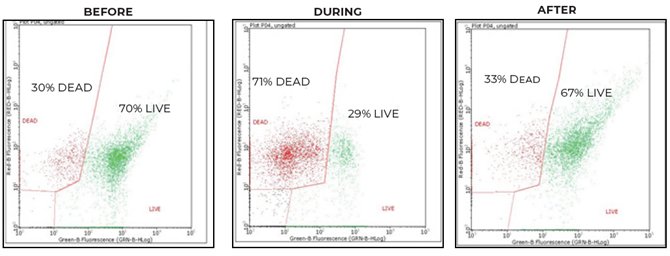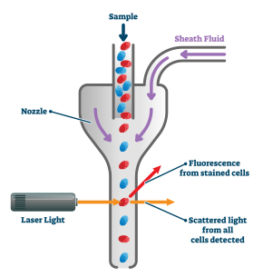Flow Cytometry in Wastewater Treatment

Flow cytometry is a laser-based technology that rapidly analyzes a single cell or particle of interest using fluorescent nucleic acid stains. This powerful tool has been used in the medical field for decades to help advance the understanding of immunology, virology, cancer biology, infectious disease monitoring, and more. The use of flow cytometry has been adapted for use in wastewater to quantify live and dead bacterial populations, taking health assessments to the next level. Our clients use this data to assess the current state of their biomass health in the biological treatment system or to monitor the effectiveness of their biocide treatment programs when controlling microbial growth. Our data can become increasingly important after major events, such as liquor spills, mill shutdowns, or startups, which may impact the productivity of biological treatment.
Recently, one of our clients experienced a significant black liquor spill at their facility, resulting in a high Biological Oxygen Demand (BOD) in the final effluent. We suspected that the spill caused a substantial reduction in the live bacterial population due to the rapid environmental changes occurring in the treatment basin. Our team arrived on-site the following day to begin assessments. Using flow cytometry, we detected a 41% reduction in the live bacterial population compared to the usual levels at this plant. In response, we implemented a recovery strategy that included adjusting pH levels, enhancing biological activity through bioaugmentation, and adding nutrients. These measures proved effective, and the bacterial levels subsequently returned to normal at a 67% live population.
The outcome of this intervention was illustrated below using a dot-plot, which compares the counts of live versus dead bacteria before, during, and after the spill occurred.


